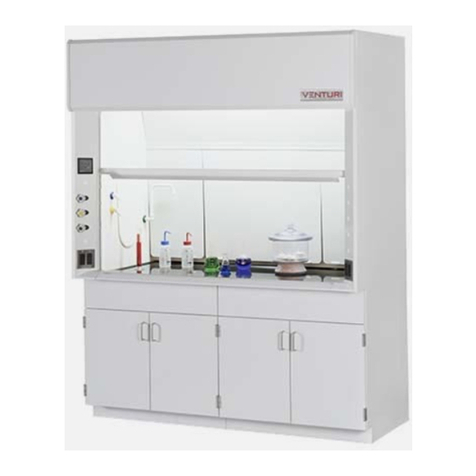
VFHOMT-11/18 - 1
Supreme Air Venturi Fume Hoods
Operation & Maintenance
Technical Manual
Table of Contents
Operating Procedures
General Procedures
All Fume Hoods.............................................................................................2
Perchloric Acid Fume Hoods.........................................................................3
Venturi Fume Hood Features & Options
Features & Option Identification....................................................................4
Venturi Effect.................................................................................................5
LED Lighting..................................................................................................5
Electromechanical Sash Stop .......................................................................5
Belt Drive Pulley System...............................................................................6
Dynamic Barrier Bypass................................................................................6
Airfoil .............................................................................................................6
Rear Baffle Removal & Adjustment...............................................................7
Interior Access Panels ..................................................................................7
Exterior End Panels ......................................................................................7
Auto Sash......................................................................................................8
Tissue Screen ...............................................................................................9
Vent Holes.....................................................................................................9
Cord Pass Through.......................................................................................9
Safety Shield.................................................................................................9
Airflow Monitor ..............................................................................................9
Ceiling Enclosure ........................................................................................10
Maintenance Instructions
General Maintenance ........................................................................................11
Belt Drive & Pulley System Maintenance ..........................................................12
Sash Maintenance.............................................................................................12
Sash Leveling Instructions.................................................................................13
Troubleshooting Guide ......................................................................................14
Sash Glass Replacement Instructions
Vertical Sash...............................................................................................16
Combination Sash.......................................................................................18
Horizontal Sash...........................................................................................20
Recommended Work Practices...................................................................................22
Installation Instructions
Fume Hood........................................................................................................26
Base Cabinets ...................................................................................................29
Ceiling Enclosure...............................................................................................30
Wiring Diagram..................................................................................................31
Electrical - Prewired/UL Listed ..........................................................................32
Parts List............................................................................................................38




























